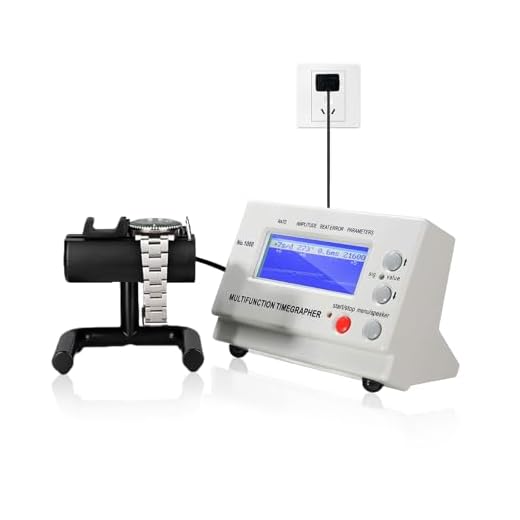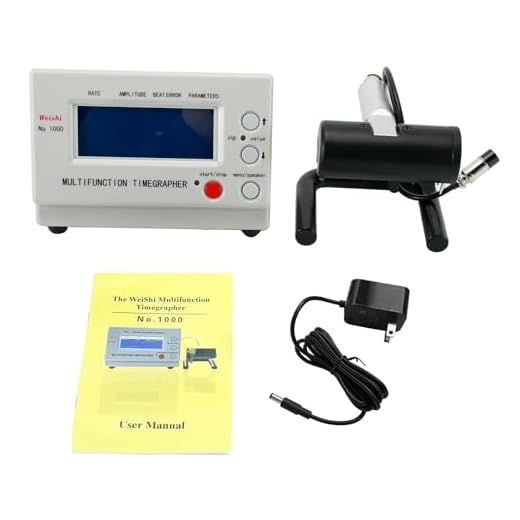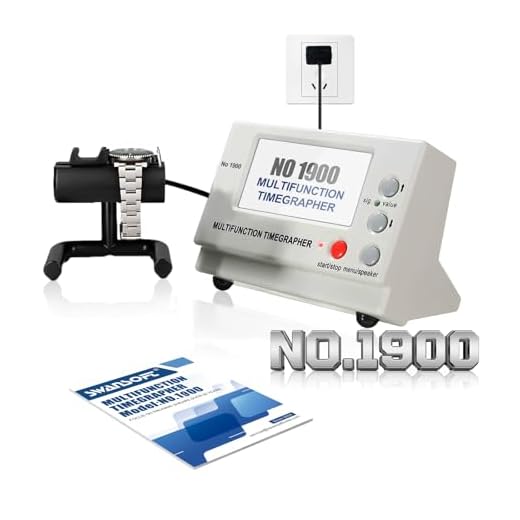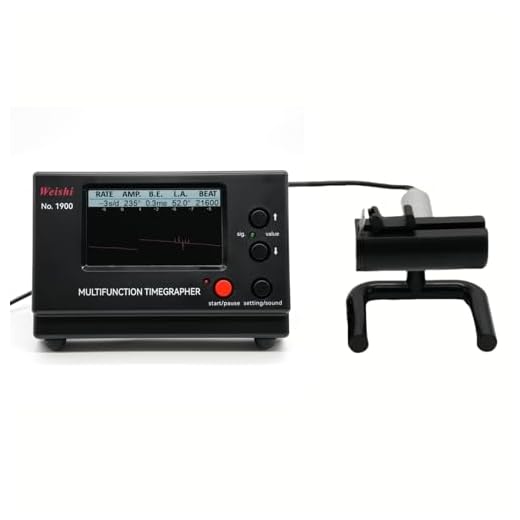Fine-Tune Your Timepiece: Why Regulation and Maintenance Matter
Automatic watches are tiny mechanical marvels that keep time through delicate moving parts. Regulation adjusts how those parts interact so the watch runs more accurately. Routine maintenance cleans, lubricates, and replaces worn components to preserve function and extend lifespan.
This concise guide shows how automatic movements work, common causes of timing drift, and the basic tools and techniques used for regulation and maintenance. You will learn which tasks are safe to perform at home and which require a professional watchmaker.
Read on to gain practical skills and simple daily habits that keep your watch accurate and reliable for years ahead.




Regulating an Automatic Wristwatch: Watch and Learn Episode 25
Understanding Automatic Movements and the Need for Regulation
The mechanical basics — who does what
An automatic (self-winding) movement converts wrist motion into stored energy and then into regulated ticks. Key parts:
Think of the balance wheel and hairspring as the pendulum of a wristwatch; small changes there change how fast the whole train runs.
How regulation changes the rate
Regulation alters the effective timing of the oscillator. Methods include adjusting a regulator index (changing the hairspring’s active length) or moving timing screws/mass on the balance (changing inertia). The result is a change in rate, usually expressed as seconds gained or lost per day. Small adjustments can shift a watch by several seconds per day.
Amplitude, beat error, and realistic accuracy
Two diagnostic terms you’ll see on a timegrapher:
Real-world expectations:
Practical tip: measure a movement over several positions and days before regulating; position- and temperature-dependent shifts reveal whether a simple regulation will suffice or if deeper service is needed.
Diagnosing Timing Issues: Common Causes of Inaccuracy
Positional variance
Automatic movements often show different rates in different positions (dial-up vs. crown-down). A watch that gains on the wrist but loses flat on the nightstand points to positional sensitivity—common in lightly regulated or worn balances.
Magnetism
A magnetized hairspring compresses and clumps, typically making a watch run fast by tens to hundreds of seconds per day. I once saw a Seiko run +90 s/day after a concert speaker encounter; demagnetizing fixed it instantly.
Lubrication breakdown and wear
Old or gummed oils increase friction; amplitude drops and rate becomes erratic. Worn pivots or jewel wear can cause intermittent stopping or a “stuttering” second hand as the train binds.
Shocks and physical damage
A severe knock can misalign the hairspring, displace timing screws, or damage pivots. Symptoms include sudden jumpy seconds, a new large daily error, or total stopping after impact.
Temperature and environment
Extreme heat or cold changes hairspring elasticity—expect small, gradual rate shifts with temperature swings. Rapid shifts after an environment change (e.g., sauna) suggest thermal sensitivity.
Power-reserve inconsistencies
Weak winding, a slipping mainspring, or insufficient rotor action can reduce amplitude late in the power cycle, causing predictable loss toward the end of the reserve.
Manufacturing tolerances
Mass-market calibers often leave the factory with wider tolerances. If a watch consistently runs 15–30 s/day across positions, it may simply be within original spec rather than “broken.”
How symptoms manifest and simple owner tests
These quick observations narrow causes before you decide whether regulation at home or a full service is needed, leading naturally into the tools and equipment to perform those checks.
Timing machine (timegrapher)
A timegrapher is the fastest way to translate a watch’s behavior into numbers: rate (seconds/day), amplitude (degrees of balance swing), and beat error (timing asymmetry between ticks). In practice, aim for amplitude ~250–320° on a healthy automatic and beat error below ~0.6 ms; a large beat error or low amplitude points to service or adjustment. Entry-level units give clear, actionable readouts for hobbyists; pros use higher-resolution models for fine calibration.
Visual and handling essentials
These let you perform safe, routine checks: swap bracelet links, replace gaskets, or adjust regulation screws. A common tip: use the correct screwdriver width—strip one screw and you’ve created a repair job.
Cleaning and small maintenance tools
Lubrication supplies
Basic oilers and a small selection of oils (e.g., light Moebius grades) let experienced users refresh a few jewels or apply caseback gaskets. Lubrication is precision work—too much oil attracts dirt; too little causes wear. For most owners, gasket grease and occasional crown stem lubrication are the safe home tasks.
What to leave to the workshop
Ultrasonic cleaners, mainspring tools, full disassembly, balance adjustments beyond a simple regulator, and professional greasing require a clean bench, magnification, and technique. Attempting major surgery risks stripped screws, lost parts, or voided warranties—remember the screwdriver anecdote above.
Keep your workspace tidy, well-lit, and organized; the right tool makes careful maintenance repeatable and rewarding, and prepares you for the step-by-step regulation techniques ahead.
Step-by-Step Regulation Procedures: From Simple Adjustments to Professional Calibration
Non‑invasive first steps (owner-friendly)
Start with observation and small behavioral fixes before opening the case:
A practical anecdote: a reader fixed a +15s/day Seiko by switching wrist and sleeping position—no tools required.
Basic regulation with a timegrapher and external regulator
When non-invasive fixes aren’t enough, use a timegrapher to guide small adjustments:
Safety tips: Use the correct-size screwdriver or regulator tool, keep the movement secure, and never force the index past its stops.
Advanced procedures and when to seek professional service
When numbers indicate deeper issues or the watch lacks an external regulator:
Stop and consult a trained watchmaker if any of the following occur:
Document every step with notes and photos—good records let a watchmaker pick up exactly where you left off.
Routine Servicing: What’s Involved and When to Send It In
What a typical service includes
A full service is more than a timing tune—it’s a deep reset that restores reliability. Typical steps performed by a trained watchmaker:
When to service: intervals and warning signs
Recommended baseline: every 3–5 years for most mechanical watches. Adjust for use and environment:
Get service sooner if you notice:
Choosing a service center and paperwork to expect
Opt for brand-authorized service for in-warranty or high-value pieces; use certified independents (WOSTEP, AWCI) for vintage or budget concerns. Ask for:
Good paperwork and a transparent technician save headaches later and preserve both performance and resale value.
Everyday Care and Preventive Measures to Preserve Accuracy
Avoid strong magnetic fields—and demagnetize if needed
Magnetization is a common, sudden cause of large gains (sometimes tens of seconds per day). Keep watches away from speakers, phone wireless chargers, fridge doors, and tools. If your watch shows abrupt fast timing or the balance sticks, try a simple demagnetizer—these are affordable (look for a Bergeon demagnetizer or compact consumer units). To demagnetize: power on the unit, place the watch on it, then slowly withdraw the watch in a straight line until it’s clear of the field.
Maintain consistent amplitude through wearing or winding
Mechanical accuracy depends on steady amplitude. Aim to wear automatics at least 8–10 hours daily to keep the mainspring charged. For infrequently worn pieces, wind fully by hand before storage; for manual-winds, wind at the same time each day.
Higher-end winders (Orbita, Wolf) mimic wrist motion; basic winders protect lubrication and reduce regulation drift.
Storage, travel, and temperature management
Avoid temperature extremes and direct sunlight—store watches in cool, dry places. When traveling:
Protect from shocks, seal integrity, and cleanliness
Remove watches for impact sports; even a one-time hard knock can upset pivots. Always screw down/secure crowns to preserve water resistance. Clean bracelets and cases with a soft brush and mild soapy water; wipe crystals with a microfiber cloth. Check gaskets annually or before water exposure.
Log positional rate differences for easier regulation
Keep a short log: note the daily gain/loss in crown-up, dial-up, crown-left, and crown-down positions over several days. A simple table or phone note makes patterns visible and speeds professional regulation.
When simple remedies (demag, winding, position changes) don’t help—persistent large drift, low amplitude, noise, or moisture—seek a pro. These owner steps help stabilize timing and make any subsequent service faster and cheaper.
Keeping Time Well: Final Thoughts on Regulation and Care
Understand automatics, diagnose issues, use proper tools safely, and follow stepwise regulation practices. Schedule professional servicing at intervals and for complex repairs. Adopt daily preventive habits—winding, correct storage, and avoiding shocks—to preserve accuracy and longevity. Balance do-it-yourself care with trusted watchmakers for best results; protect your investment and enjoy reliable timekeeping.





Quick question — the article mentions an Automatic Single Watch Winder in Carbon Fiber. For an automatic that I wear every few days, is a winder necessary? Or can I just store it and wind manually when needed?
Good question. Winders can be helpful to keep lubricants distributed and calendars set, but they also keep the movement running constantly which may increase wear. If you wear it semi-regularly, manual winding when you use it is fine.
I only use a winder for complicated annual calendars — for a simple 3-hander I’d skip it unless you hate resetting the date. Also carbon fiber winders do look slick 🙂
Nice read! Short and useful. Picked up the JOREST kit last month and it made bracelet adjustments so much faster. Worth every penny. 👍
I like that the article warns you not to go full ‘mad scientist’ on your heirloom watch. 😂
I bought the Complete 155-Piece kit and thought, “I’m basically Horology Beckham now.” Spoiler: I ruined one spring bar and learned what humility feels like. Still, the link remover (JOREST) is shockingly useful. For anyone considering DIY: buy the kit, but maybe don’t start with your grandfather’s Rolex. Or do — but don’t tell me about it.
Made the same mistake with a vintage gift. Now I stick to bracelets and light maintenance at home.
PS: If you keep trying DIY, consider investing in a good loupe and a bench mat. They save a lot of tears (and screws).
Haha, noted. We definitely recommend practicing on cheaper movements and keeping family heirlooms for pros unless you’re confident.
At least you got entertainment value out of it — and a good story. 😂
This line made me laugh: ‘don’t poke the hairspring unless you know what you’re doing’ — truer words. 😆
Long story: I once tried to ‘just nudge’ the regulator on a vintage ETA 2824 because it was 20s fast. Two hours later I had a mangled index and a panic call to my local watchmaker. He fixed it, but charged me more than the Complete 155-Piece Watch Repair Tool Kit cost me. Moral of the story:
1) Practice on cheap movements.
2) Buy a timegrapher (KINSANINC or SWANSOFT No.1900 are good picks).
3) Know when to send it to pros. You can save a lot by learning, but some repairs are wallet-draining if you botch them.
When in doubt, back off. It’s amazing how small regulator tweaks compound. Timegrapher + tiny adjustments = best practice.
Oof. Same — I bent a pallet fork once trying to ‘adjust’ the escapement. Learned the hard way. Now I only do basic stuff and leave the rest to pros.
I broke a spring bar instead of a hairspring and felt like less of a monster, but still… pricey mistake 😂
Hilarious but painful lesson, Oliver. Thanks for sharing — real-world cautionary tales like that help newbies be more careful.
Also worth noting: some watches have regulating screws vs index pins — find out your movement type before poking around.
Loved the diagnostic section. I tried to regulate a Miyota movement once with just a loupe and some tweezers — ended up making it worse. For anyone starting out: invest in a timegrapher (YaeTek or SWANSOFT) and a decent link remover like JOREST. The article’s tool list nailed it.
Totally — the right tools prevent a lot of accidental damage. The JOREST link remover is handy and cheap; combine it with a mat and good lighting.
I DIY regulated a Miyota too, and same story. The timegrapher told me everything I needed — beat error was my enemy.
Would you recommend practicing on a cheap Chinese movement first? Any suggestions on which to buy for practice?
Nice practical tips in the ‘everyday care’ section. I started using a watch pillow and microfiber cloth after reading this and it’s already saved me time resetting crowns and fussing with smudges.
Also: the Complete 155-Piece kit’s case opener is decent for quick battery swaps on quartz but not the sturdiest for screwback divers — heads up.
Thanks for the tip, Amelia. Good point about case openers — tool quality varies and some multi-kits aren’t ideal for screwback cases.
Techy nitpick: the article’s section on the timegrapher could’ve dug deeper into how amplitude readings vary by position and mainspring tension.
Example: a freshly wound movement will show higher amplitude in dial-up than dial-down; a low amplitude across all positions usually points to lubrication or a weak mainspring. Timegrapher models (YaeTek, SWANSOFT No.1000, KINSANINC No.1900) differ in UI and smoothing filters — don’t expect identical numbers across brands.
Anyone here compare YaeTek vs SWANSOFT readings side-by-side?
YaeTek’s interface is clunkier but cheaper. For diagnostics I was fine with it, but if you want nicer graphs go SWANSOFT.
I did a side-by-side once. SWANSOFT seemed more ‘stable’ but showed slightly different absolute amplitude. Use one machine consistently if you want to track progress.
Spot on, Ethan. We mentioned amplitude briefly but could expand in a follow-up. Different machines do apply filters and averaging, so trends matter more than absolute numbers.
Thanks for the deeper explanation. I was confused why my amplitude looked low on one machine and fine on another — makes sense now.
Wouldn’t mainspring replacement be the fix for persistently low amplitude after cleaning? Trying to understand when to swap parts vs relube.
Yes, Amelia — if low amplitude persists post-service, suspect mainspring fatigue or friction points. A good tech will diagnose by elimination.
Great article — finally something that breaks down regulation without assuming you’re a master watchmaker.
I especially liked the step-by-step regulation section and the tool list. I’ve been thinking of pairing the SWANSOFT No.1000 timegrapher with the Complete 155-Piece Watch Repair Tool Kit for at-home tweaks. Anyone tried that combo?
Also, the bit about amplitude vs beat error was super helpful. I used to ignore amplitude entirely and wonder why my Seiko kept running fast 😂
Thanks, Liam — glad it helped! The SWANSOFT No.1000 plus a solid tool kit is a common DIY starting point. The timegrapher gives objective numbers so you can track changes as you make tiny regulator moves.
For what it’s worth, the KINSANINC No.1900 gave me more consistent readings than a cheap knockoff. Worth the spend if you’re serious.
Agree with Marco. The quality of the timegrapher matters. Also practice on cheaper movements first — vintage Omegas are not forgiving.
I’ve used the Complete 155-Piece kit with a SWANSOFT machine. Works fine for basic regulation, but be gentle with hairspring bends — one slip and you’ll need professional help.
Love the servicing section. Can someone summarize what ‘routine servicing’ actually includes? Like, is it just cleaning and oiling or more complicated?
Great question. Routine servicing typically includes disassembly, cleaning (ultrasonic), inspection and replacement of worn parts, lubrication, reassembly, timing/adjustment, and pressure testing for water-resistant pieces.
If you have a diver or frequent-water-use watch, ask about pressure testing specifically. That part’s often overlooked when budgeting for service.